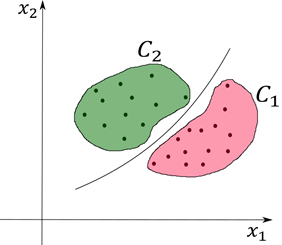Many Computer Vision Lectures (full PDFs) are available below for free!
DESCRIPTION
Nowadays, Artificial Intelligence drives scientific and economic growth worldwide. This is largely due to advances in Machine Learning (ML). Its applications span and revolutionize almost every human activity:
- Autonomous Systems (cars, drones, vessels),
- Media Content and Art Creation (including fake data creation/detection), Social Media Analytics,
- Medical Imaging and Diagnosis,
- Financial Engineering (forecasting and analytics), Big Data Analytics,
- Broadcasting, Internet and Communications,
- Robotics/Control
- Intelligent Human-Machine Interaction, Anthropocentric (human-centered) Computing,
- Smart Cities/Buildings and Assisted living.
- Scientific Modeling and Analytics.
This CVML Web Module focuses on Machine Learning theory, its applications in the above-mentioned diverse domains and new challenges ahead.
ML terminology and the strict mathematical definition of its tasks, as detailed in the first lecture, are essential, because the confluence of scientists from many disciplines to AI and ML created a havoc of terms and concepts. Then, Unsupervised Learning (Data Clustering) is detailed, allowing us to find structure and extract concepts/knowledge from huge high-dimensionality data. Supervised Learning (Data Classification) techniques are subsequently presented, notably: a) Decision surfaces (whose special case is DNNs and SVMs) and b) Distance based classification. Label Propagation provides a useful bridge between both Unsupervised and Supervised Learning.
Then, Dimensionality Reduction techniques are overviewed, allowing us to visualize high-dimensionality data found in most applications, ranging from Medicine to Financial Engineering. Graph-based Dimensionality Reduction provides a unified framework for Dimensionality Reduction. Kernel methods are presented that can boost performance of any linear ML operation (e.g., PCA, K-means etc).
Finally, Bayesian Learning, complemented by Parameter Estimation and Hypothesis Testing, provides a unified theoretical framework that can encompass many of the ML approaches.

LECTURE LIST
- Introduction to Machine Learning
- Data Clustering
- Distance-based Classification
- Decision Surfaces. Support Vector Machines
- Label Propagation
- Dimensionality Reduction
- Graph-based Dimensionality Reduction
- Kernel Methods
- Bayesian Learning
- Parameter Estimation
- Hypothesis Testing
- Syntactic Pattern Recognition
CVML WEB LECTURE MODULE SCHEDULE
This module has been designed to be mastered within 1 month (or less), if you have proper background (at least early undergraduate student in an EE, ECE, CS, CSE or any Engineering or Exact Sciences Department).
We propose that you follow the above mentioned Lecture order. You may want to skip few Lectures that might not be of immediate interest to you for later study.
On average you can study 4 lectures per week. The related effort is as follows:
1) Lecture pdf study and filling the related understanding questionnaire: 1-2 hours per lecture (on average, depending on your background)
2) Tutorial exercise (if available): 1/2 hour on average (more if you do not have theoretical skills). We strongly recommend to try solve them yourself, before resorting to the existing solution.
3) Programming exercise (if available): 3-4 hours on average (more if you do not have good programming skills). We strongly recommend to try program them yourself, before resorting to the existing code.
The following lectures are accompanied by programming or tutorial exercises:
- Decision Surfaces.Support Vector Machines (5 Tutorial Exercises)
- Bayesian Learning (4 Tutorial Exercises)
- Data Clustering (2 Tutorial and 2 Programming Exercises)
